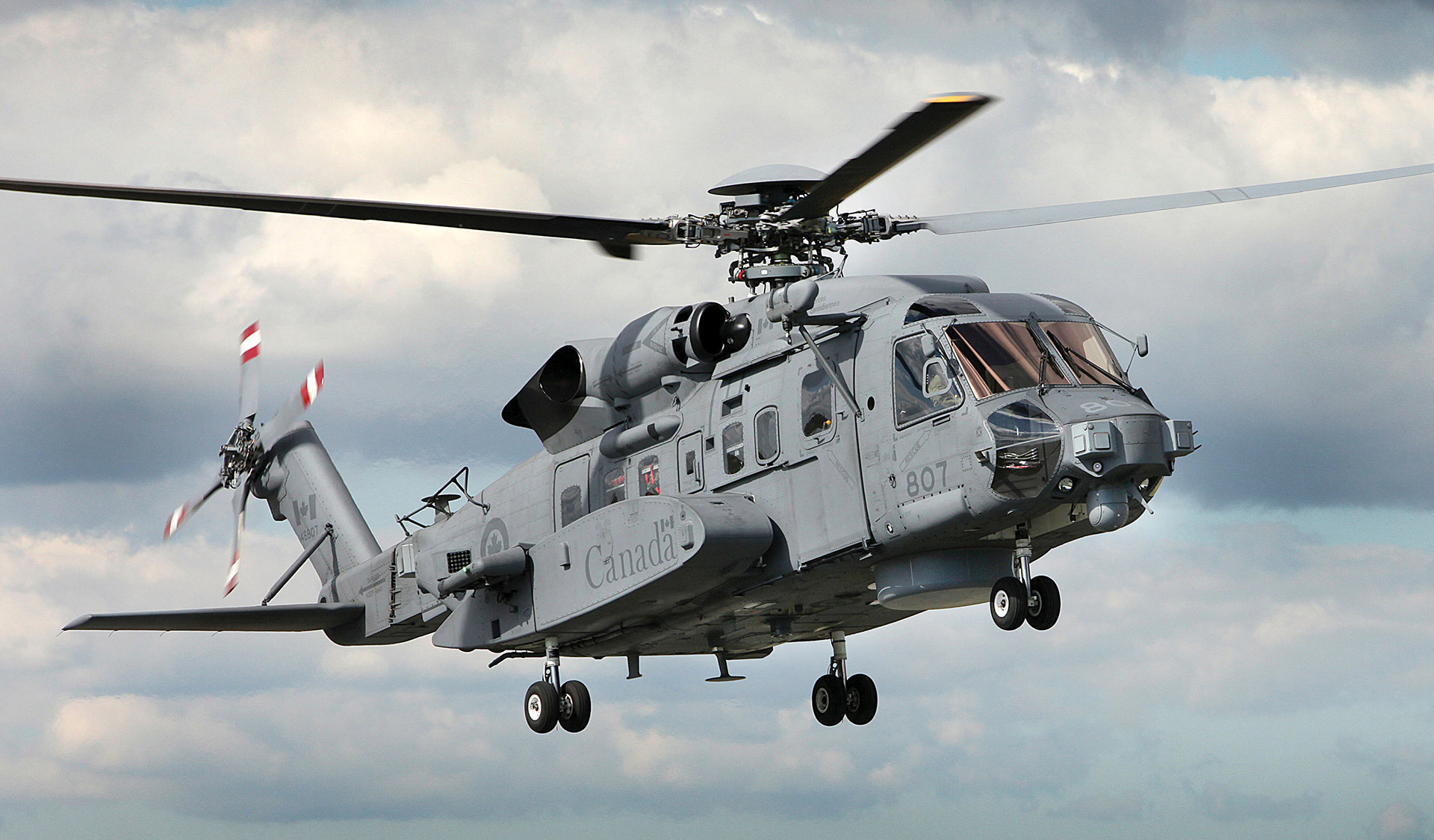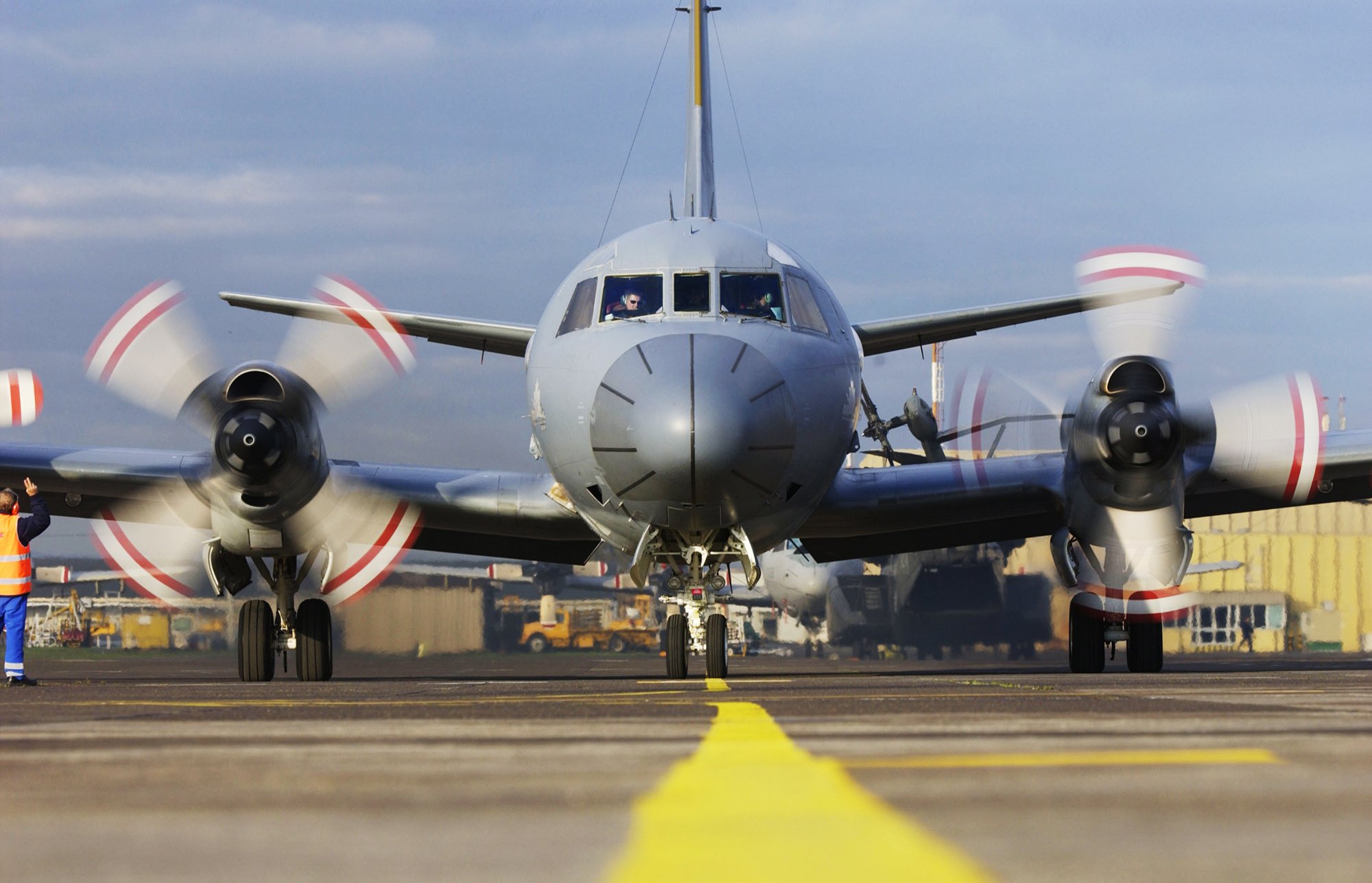As tensions mount in the Indo-Pacific region, a Chinese PLA aircraft is once again said to have fired military flares in front of a Canadian military helicopter over international waters in the South China Sea.
“The risk to a helicopter in that instance is the flares moving into the rotor blades or the engines, so this was categorized as unsafe, non-standard, and unprofessional,” Royal Canadian Navy frigate HMCS Ottawa onboard air officer Maj. Rob Millen said. The Sikorsky Cyclone helicopter was flying off the flight deck of HMCS Ottawa.
The Sikorsky CH-148 Cyclone is a twin-engine, multi-role shipborne helicopter developed by the Sikorsky Aircraft Corporation for the Canadian Armed Forces. The flare or chaff is typically released by military planes as a planned countermeasure to confuse missiles, but it can also be used to sabotage an aircraft in flight. The flares could have a blinding effect on the pilot of any plane, which makes the maneuver super risky.
Speaking to CNN from aboard the warship, Millen said Ottawa’s helicopter had two interactions with Chinese People’s Liberation Army Navy’s J-11 fighter aircraft over international seas on October 29, the second of which saw the fighters approach as close as 100 feet from the chopper.
He claimed that although Chinese aircraft had frequently approached fixed-wing planes of Canada and other countries, such an action against a helicopter was unusual.

The first incident occurred in international seas in the northern South China Sea, 34 miles from the Paracel Islands complex, and the second outside a 23-mile radius around the Paracels, over international waters. At the time, the cruiser was sailing some 100 miles, or about 160 kilometers east of the Paracels, in international seas.
According to officers on board the Ottawa warship, the two incidents happened when the Canadian helicopter was looking for a submarine that had been spotted earlier. Millen told the publication that he was piloting the Canadian helicopter earlier in the day when it was caught by Chinese J-11s at close range. It was returning toward Ottawa at 3,000 feet above the lake, flying straight and level and giving no indication that it was hostile.
Millen claimed that during the previous encounter, the Chinese fighters circled his helicopter. “When the intercepting aircraft was closer and closer, at a certain point, it became unsafe,” he said.
According to Millen, his helicopter encountered turbulence after leaving the Chinese planes, endangering the copter. The helicopter can function below 200 feet, but it is “very uncomfortable for fast air fighter jets,” according to Millen, who concluded the encounter by dropping below that altitude.
The air force major from Canada stated that his troops would keep flying over the South China Sea’s international waters because they are trained to deal with incidents like the ones that happened on the day.
The Ottawa has been patrolling the waterway for more than a week now, occasionally collaborating with aircraft and navy vessels from the United States, Australia, Japan, and New Zealand for an international drill known as Noble Caribou. But at the time of the Chinese jet contacts, it was functioning alone.
NEW: U.S. 7th Fleet Destroyer + Canadian Frigate transited the Taiwan Strait in a Freedom of Navigation operation.
U.S. + Canada last conducted a Taiwan Strait transit together in early September.@CollinSLKoh @IndoPac_Info @Schizointel @DefenseBulletin @duandang @JaimeOcon1 https://t.co/XUZIpRqvTi
— Ian Ellis (@ianellisjones) November 2, 2023
The recent revelation by the Canadian officials comes even as US and Canadian warships are transiting through the contested Taiwan Strait, their second joint passage in two months. In response to this passage, which China fiercely disapproves of, Chinese officials noted that PLA troops were keenly watching the transit and were on “high alert.”
The Chinese PLA has been making headlines recently, especially concerning its engagement with the Philippines Coast Guard in the South China Sea in October. A Chinese coast guard ship and one of its militia vessels separately bumped a Philippine coast guard ship and a military-run supply boat last month.
The engagement between international fighter jets flying over the region and the PLA Air Force aircraft has become commonplace since China claims almost the entire South China Sea as its territorial waters. Moreover, it regularly criticizes the presence of Western military assets in the region, calling it “provocative.”
For instance, Chinese foreign ministry spokesman Wang Wenbin told reporters, “We have reiterated many times our firm position on Canadian warplanes conducting reconnaissance near China’s territorial airspace. We hope Canada will refrain from its inappropriate behavior to prevent the situation from becoming more complicated.”
This is not the first time the PLA has engaged in close maneuvers and engagements with Western military aircraft. The last episode that came last year triggered a diplomatic storm.
When PLA Fighters Met Canadian Jets Last Year
In early June 2022, Concerns about a potentially dangerous increase in Chinese fighter pilot aggression over the Asia-Pacific area were first voiced by the Canadian government.
At the time, there were reports that Chinese fighter pilots had been conducting dangerous interceptions on a Royal Canadian Air Force CP-140 maritime patrol aircraft since December 2021. The Canadian aircraft was reportedly part of a UN mission patrolling over international waters.
Reports in Canadian media at the time suggested Chinese fighter jets had conducted about 60 of these intercepts, more than two dozen of which had been deemed risky.

Detailing how these intercepts were carried out, the reports said that Chinese aircraft frequently flew between 20 and 100 feet from the Canadian plane. This meant that Canadian pilots could even make eye contact with the Chinese pilots and sometimes see them raising their middle fingers.
Charles Burton, a senior fellow at the Macdonald-Laurier Institute in Ottawa, told Global News, “(That distance is) scary close at those high speeds, and it could lead to a crash. You do it too much, and eventually, sometime, it’s going to go wrong.”
A spokesperson of the Department of National Defense took it up publicly by iterating that the events were “of concern and increasing frequency.”
“In some instances, the (Canadian) aircrew felt sufficiently at risk that they had to quickly modify their flight path to increase separation and avoid a potential collision with the intercepting aircraft,” the spokesperson said.
In reaction to the incidents, the Canadian government has repeatedly reprimanded Beijing diplomatically, calling the acts of the Chinese pilots “unsafe and unprofessional.” Beijing, though, is thought to have said nothing about these instances. However, with the recent incident with the Canadian helicopter, it is evident that the complaints have fallen flat.
Shortly after the dangerous interceptions of Canadian planes were reported last year, the Australian Department of Defense also disclosed an unsafe interception of one of its reconnaissance aircraft over the South China Sea. The Chinese aircraft “flew very close to the side of the [Australian] P-8 maritime surveillance aircraft” and then “released flares,” Defense Minister Richard Marles told reporters at the time.
As accusations were hurled at Chinese fighter pilots, analysts from China turned the responsibility onto Canadian and Australian fighters instead, accusing them of provocation.
- Contact the author at sakshi.tiwari9555 (at) gmail.com
- Follow EurAsian Times on Google News




